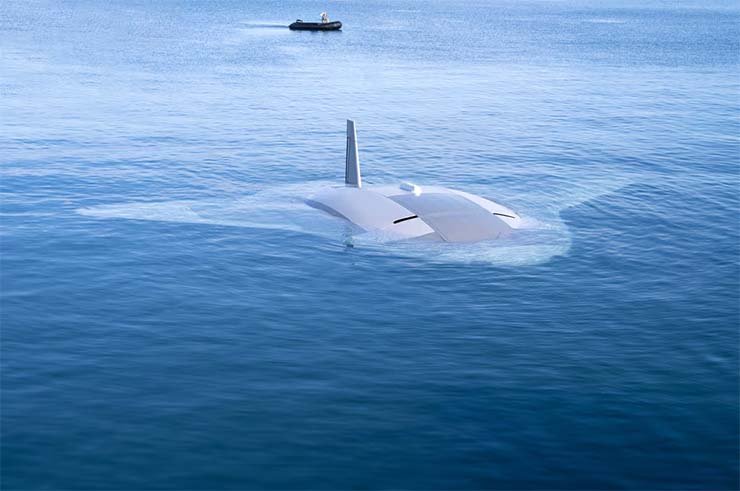
Washington: Northrop Grumman’s massive Manta Ray underwater test bed completed at-sea trials this year, validating its ability to operate below the waves and with minimal human contact.
The grey unmanned underwater vehicle — considered to be “extra large,” in military parlance — dwarfs the boat trailing it as well as the person aboard.
Those working on the secretive project declined to provide specific measurements about its size, but said the UUV is modular. It was separated into pieces on the East Coast and shipped cross-country where “a small team was able to reassemble the vehicle on a standard Navy concrete pier using only common support equipment and a single crane,” according to Brian Theobald, a principal investigator and chief engineer at Northrop.
“I think it is striking in its size and scale, even for those folks that have been there throughout the design process,” he said in an interview. “We see everything in model-based views, in CAD, et cetera, and it’s not until you see it actually built, full scale, that it truly hits home.”
Its first dunk and subsequent trials off the coast of California revealed “no leaks or ground faults or other build issues,” he added. “I think we can all relate: Water is going to go into every single crevice and place that it can get to.”
Northrop’s offering is years in the making. The Defence Advanced Research Projects Agency in 2020 kicked off the program with the thought of creating a large underwater drone that can operate independently of manned vessels and ports once underway. It was also meant to shepherd critical tech for a new class of what the agency called “payload-capable UUVs.”
Northrop last month teased its prototype during the Sea-Air-Space naval conference in Maryland. The image the company shared was darkened and showed little more than its rounded nose and glider-like body.
Key considerations for Manta Ray development include threat detection, classification and communications capabilities, high-efficiency propulsion systems, and the ability to withstand the taxes of undersea environments. Having a drone that can survive on its own for protracted periods of time would reduce logistical demands and free up manpower.
“The design goal is to be completely autonomous, requiring little human interaction or maintenance to achieve its mission goals,” Joseph Deane, Northrop’s Manta Ray program manager, said in an interview. “What makes it stand out is its low power usage, the ability to go very long distances, the autonomous aspect of it, to operate without human interaction for long periods of time. Those capabilities don’t exist right now.”
The Department of Defence is increasingly interested in uncrewed technologies and their battlefield application. The Navy is seeking to establish a so-called hybrid fleet, empowering sailors and Marines with smart machinery and the sensors or weapons they carry. The Manta Ray prototype features multiple bays for payloads of different types and sizes.
The Navy and DARPA are expected to discuss next steps for the Manta Ray program, including additional testing and potential technology transfers.















